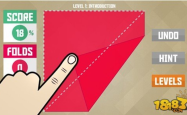防止儿子作死的游戏
Title: Exploring the Impact and Risks of "Choking Game" Among Adolescents
In recent years, the dangerous phenomenon known as the "Choking Game" has gained attention due to its potentially fatal consequences among adolescents. This activity involves intentionally depriving oneself of oxygen to induce a temporary high or euphoria. Despite its misleading name, the "Choking Game" is not a game at all but a risky behavior with severe health implications. Let's delve into the factors contributing to its prevalence, its potential risks, and strategies for prevention.
Understanding the Phenomenon:
The "Choking Game" typically involves selfasphyxiation or the use of strangulation devices to restrict airflow to the brain. Adolescents often engage in this behavior in peer groups, believing it to be a harmless way to experience a fleeting sense of euphoria. However, this practice is far from benign and can lead to grave consequences.
Risks and Consequences:
1.
Brain Damage and Death:
The primary risk of the "Choking Game" is accidental death. When oxygen to the brain is restricted, it can result in permanent brain damage or even sudden death due to asphyxiation. Even a momentary loss of consciousness can lead to falls or other accidents, exacerbating the risk.2.
Physical Injuries:
Aside from the risk of death, participants may sustain physical injuries such as broken bones, concussions, or bruises from falls associated with loss of consciousness.3.
Psychological Impact:
Engaging in the "Choking Game" can have profound psychological effects on both participants and witnesses. Survivors may experience guilt, shame, or trauma, while witnesses may suffer from emotional distress.4.
Social and Academic Consequences:
Adolescents involved in the "Choking Game" may face social ostracization or academic repercussions if their behavior is discovered by parents, teachers, or authorities. This can further exacerbate feelings of isolation or alienation.Contributing Factors:
Several factors contribute to the prevalence of the "Choking Game" among adolescents:
1.
Peer Pressure:
Adolescents may feel pressured to participate in risky behaviors to gain acceptance or validation from their peers. The desire to fit in and avoid social rejection can override concerns about personal safety.
2.
Lack of Awareness:
Many adolescents underestimate the dangers of the "Choking Game" due to a lack of accurate information or awareness about its potential consequences. Misconceptions about its safety perpetuate its allure.3.
Seeking Thrills:
Adolescents are naturally inclined to seek out novel and exciting experiences. The "Choking Game" may be perceived as a thrilling or adventurous activity without fully understanding the associated risks.4.
Online Influence:
The proliferation of online platforms and social media can facilitate the spread of dangerous behaviors like the "Choking Game." Videos or tutorials promoting this activity may attract vulnerable adolescents seeking new forms of entertainment.Prevention and Intervention Strategies:
1.
Education and Awareness:
Comprehensive education programs in schools and communities can raise awareness about the dangers of the "Choking Game" and provide accurate information about its risks and consequences. Parents, teachers, and healthcare providers should be equipped with resources to recognize warning signs and intervene effectively.2.
Open Dialogue:
Encouraging open communication between adolescents and trusted adults is essential for addressing underlying issues that may contribute to participation in risky behaviors. Adolescents should feel comfortable discussing peer pressure, stress, or other concerns without fear of judgment.3.
Promoting Healthy Coping Mechanisms:
Adolescents should be encouraged to seek out healthy and constructive ways to cope with stress, anxiety, or peer pressure. Engaging in sports, creative activities, or social support networks can provide alternative outlets for selfexpression and connection.4.
Parental Supervision and Support:
Parents play a crucial role in monitoring their children's behavior and providing guidance on responsible decisionmaking. Establishing clear expectations, setting boundaries, and fostering a supportive environment can help prevent adolescents from engaging in risky behaviors like the "Choking Game."In conclusion, the "Choking Game" poses significant risks to adolescent health and wellbeing, necessitating proactive efforts from parents, educators, healthcare professionals, and communities to prevent its occurrence. By raising awareness, promoting open dialogue, and providing support networks, we can empower adolescents to make informed and safe choices, ultimately safeguarding their futures.
免责声明:本网站部分内容由用户上传,若侵犯您权益,请联系我们,谢谢!联系QQ:2760375052









